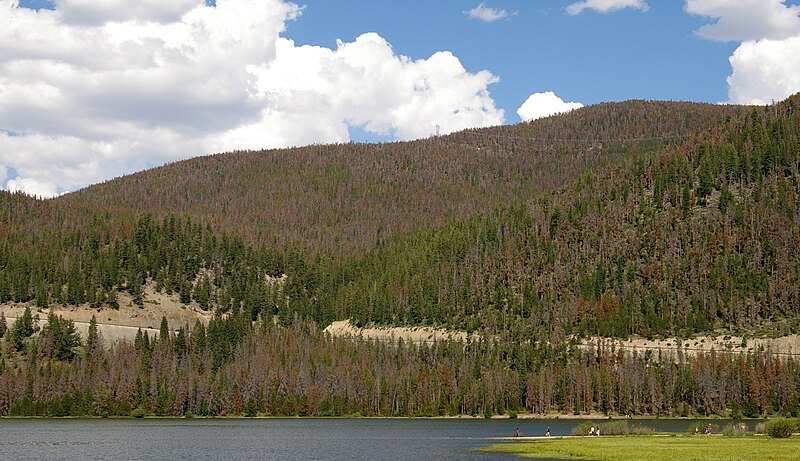
So many of us have seen the effects of Mountain Pine Beetles on forest we’ve visited here in the west ~ up close we see dead or dying trees and from afar perhaps a red and gray hue from within a forest canopy.
Mostly, we’ve come to learn via media accounts, the words and tones of managers – even conservationists – that Pine Beetles are “negative”, that they’re a “threat” to “healthy” forests.
Testimony of George Wuerthner June 19, 2009 Joint Oversight Hearing on “Mountain Pine Beetle: Strategies for Protecting the West”:
PEJORATIVE WORDS
Let me start my testimony by suggesting that many of the phrases and words used to describe natural ecological processes like episodic pine beetle events and wildfire are pejorative in tone. We heard a lot of people testifying in this hearing that pine beetles were destroying the forests and/or wildfires were catastrophic and so forth. From the perspective of human values, these words might resonate—certainly if a wildfire burns down someone’s home, it is a devastating experience. However, it is less clear that these terms are appropriate in describing natural ecological events like pine beetle events or large blazes. (See my comments on this in Wildfire: A Century of Failed Forest Policy or Rocca and Romme (2009).

George also points out that some scientists increasingly believe that dead trees may be more important to a forest ecosystem than living ones ~ beetles characterize a healthy forest ecosystem.
Beetle Hysteria Again – New West, George Wuethner:
Even more importantly the news media often neglects to educate the public about the ecological value of bark beetles as “ecosystem engineers”. Beetles are essential to maintaining biodiversity in our forests. One study of bark beetles in Europe found that bark beetles created habitat for a wide array of other insect species, including many pollinating bees and warps, whose numbers increased in the forest gaps created by bark beetles.
But it’s not just insects that increase as a consequence of beetle kill. [more…]

Comments
That is just like words used by ranchers and BLM and Forest range cons to describe sagebrush are pejorative – and so they can destroy it with “treatments”. Like “decadent” (old growth). Lordy, we can’t have that. Kill, thin, hack, crush, spray.
We’ve got old growth coming out our ears if you count all the OG lodgepole, spruce, high elevation fir. But that’s not the OG that people want which is the stands of Ponderosa pine and Douglas-fir pictured in George’s article. That’s the stuff that’s nealy gone thanks to logging and yes, I’ll disagee with George, fire suppression. What little OG Ponderosa still exists is vulnerable to fire whethr it’s a consequence of climate change (George’s opinion) or decades of fire supression whcih in my opinion is more likely. Every year thousnads of small fires are suppressed in mesic habitat types. this has allowed the survival of a thick understory of shade tolerant species that when burned carry flames into the canopies of OG Ponderosa pine which had survived decades, even centuries, of low intensity ground fires. George is correcxt in everything he testified to but it’s still not the whole story. If people want OG Ponderosa, like the parks illustrated, the little remaining Ponderosa pine remaining should be protected by thinning the shade tolerant understories and periodic under burning. Given climate change it is probably even more imperitive.